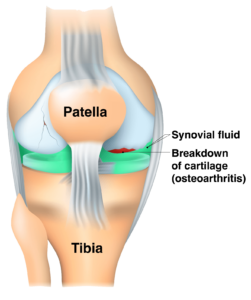Gel Injections for Knees
Understanding Knee Gel Injections
Gel injections, also known as Viscosupplementation, are a non-surgical treatment option for knee osteoarthritis. This condition occurs when the cartilage in the knee joint breaks down, leading to pain, stiffness, and reduced mobility.
How Do Knee Gel Injections Work?
 Gel injections involve injecting hyaluronic acid into the knee joint. Hyaluronic acid is a naturally occurring substance that lubricates and cushions the joint. By revitalizing this fluid, knee gel injections can alleviate pain and improve joint function.
Gel injections involve injecting hyaluronic acid into the knee joint. Hyaluronic acid is a naturally occurring substance that lubricates and cushions the joint. By revitalizing this fluid, knee gel injections can alleviate pain and improve joint function.
Think of it like this: would you rather change your oil every six months (knee gel injections) or wait until the engine doesn’t run anymore and get a new one (knee replacement surgery)?
Benefits of Gel Shots for Knees
- Pain Relief: Gel injections can significantly reduce knee pain with 9 out of 10 patients reporting noticeable pain relief.
- Improved Mobility: By lubricating the joint, these injections can enhance flexibility and range of motion.
- Non-Invasive: Gel injections are a minimally invasive procedure with minimal recovery time.
- Delaying or Avoiding Surgery: In some cases, gel injections can delay or even avoid the need for knee replacement surgery. Studies also show gel injections can delay the progression of osteoarthritis.
Effectiveness of Knee Gel Injections
Numerous studies have shown the effectiveness of hyaluronic acid injections for knee osteoarthritis. However, the degree of improvement can vary from person to person. Factors such as the severity of osteoarthritis and individual response to treatment can influence the outcome.
While the effectiveness and length of efficacy varies from person to person based on physical activity and other factors, positive results are reported across the board by patients.
Potential Side Effects of Knee Gel Injections
While generally safe, gel injections can cause some minor side effects, including:
- Temporary pain, swelling, or redness at the injection site.
- Mild bruising.
The most common side effect is mild pain and swelling at the injection site, which typically resolves on its own. In rare cases (about 1% of people), a more severe reaction known as an injection flare may occur. This can cause significant swelling and pain due to fluid accumulation in the joint. Your healthcare provider can alleviate this by draining the excess fluid.
Are You a Candidate for Knee Gel Injections?
If you’re experiencing knee pain due to osteoarthritis, consult with our doctors to determine if gel injections are right for you. We’ll consider factors like the severity of your condition and your medical history to give you a non-biased assessment and recommend treatment options.
We’re confident in our knee gel injections. If they provide relief, you may find them beneficial enough to consider twice-yearly treatments. Overall, gel injections are a low-risk option that may help you delay or avoid knee surgery.
Contact Us Today
To learn more about knee gel injections, their costs, and insurance coverage, please contact us:
- Chicago Office: (708) 722-7514
- Edina (Minneapolis) Office: (952) 214-4278
By understanding your options, you can make informed decisions about your knee health.
Take the next step by calling us today!
Our friendly staff can help:
Answer any questions or concerns
Set up an appointment
Prefer to get a call-back instead? Contact Us Here